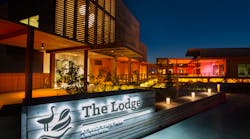This article was published in the June 2011 issue of LEDs Magazine.
View the Table of Contents and download the PDF file of the complete June 2011 issue.
+++++
It’s generally accepted that if you started with a blank sheet of paper, you wouldn’t design LED lamps that look much like conventional incandescent or fluorescent lamps (either linear fluorescents or CFLs). This is because it’s difficult to match the thermal and optical characteristics of LEDs with the form factors of conventional lamps and their sockets. Even so, there is a huge potential market for retrofit LED lamps that offer high performance at an acceptable price point, and companies are racing to stake their claim. Literally minutes ago I received an email entitled “First 100-watt-equivalent LED bulb” – see below for more details.
However, retrofit lamps are not the only answer. Cree, for example, recently announced a series of LED luminaires that are designed to replace the types of ceiling troffer fixture into which one would place a linear fluorescent lamp. As described on page 9, in Cree’s luminaires a color-mixing chamber and ref lector system produce the desired light output, while a room-side heat sink is incorporated as a design element.
Back to retrofit lamps. Yesterday I received a press release entitled “Philips to unveil the world’s first LED replacement for the 75-watt light bulb.” The EnduraLED A21 lamp consumes 17W, but will not be available until the fourth quarter of 2011 in the US. So perhaps the word “prototype” should have been included in Philips’ press release. Several other companies might also disagree with the use of the words “world’s first.” The press release also says that the suggested retail price for consumers has not yet been finalized but is expected to be in the range of $40-45. Oddly, Philips did not give specifications except to say that the lamp has “been developed to meet or exceed Energy Star qualifications” for a 75W replacement i.e. 1100 lumens at 17W (65 lm/W), a color temperature of 2700K, a CRI of 80, and a 25,000-hr life.
In fact, Switch Lighting announced a 75W-replacement LED lamp several weeks ago (see page 16 and this issue's cover image). The design has some unusual features, namely outward-facing LEDs mounted on metal fingers, inside a globe filled with an inert liquid. This creates a socalled self-cooling environment inside the bulb, allowing maximum brightness with fewer LEDs, says the company. And just in time for Lightfair, Switch said it would show a 100-watt-equivalent A19 LED lamp that produces 1700 lm in neutral white, which is “the same beautiful white color as halogen track lighting,” said Brett Sharenow, Switch’s Chief Strategy Officer. He added that the company “will offer a warm-white version of the 100W-equivalent bulb in mid-to late-2012.”
These announcements indicate the performance levels that we can expect to see in the shops over the next 1-2 years, although retail prices will need to hit the appropriate levels. The ongoing improvement in lamp performance is enabled in part by LED makers who continue to push the limits of LED efficacy, for example Cree’s R&D result of 231 lm/W for a 4500K LED (page 10). Another factor is the development of more advanced LED fabrication processes, which are helping to improve yields and reduce costs, as our articles on pages 31 and 41 describe.




